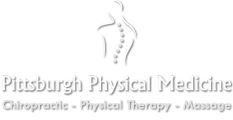Thoracic Outlet Syndrome in Pittsburgh PA

Thoracic Outlet Syndrome (TOS) in Pittsburgh PA is a complex and often misunderstood condition that involves compression or irritation of the nerves, blood vessels, or both, as they pass through the thoracic outlet. The thoracic outlet is a narrow space located between the base of the neck and the upper chest, encompassing the collarbone (clavicle), first rib, and surrounding soft tissues.
TOS can be classified into three main types, depending on the structures affected:
- Neurogenic Thoracic Outlet Syndrome: This type occurs when nerves, such as the brachial plexus (a network of nerves originating from the spinal cord in the neck), are compressed or irritated. The compression can result in symptoms such as pain, numbness, tingling, weakness, or a pins-and-needles sensation in the neck, shoulder, arm, or hand. The symptoms may worsen with certain movements, such as raising the arms or prolonged overhead activities.
- Vascular Thoracic Outlet Syndrome: Vascular TOS involves the compression or restriction of blood vessels, most commonly the subclavian artery or subclavian vein. This compression can lead to symptoms such as coldness or discoloration of the hand or fingers, swelling, throbbing pain, or a weakened pulse. In severe cases, it may even result in blood clots or circulation issues.
- Nonspecific or Disputed Thoracic Outlet Syndrome: This category encompasses cases where symptoms may not fit precisely into the neurogenic or vascular classifications. Some experts argue that these cases may involve muscular imbalances, poor posture, or other factors contributing to the development of TOS symptoms.
What Causes Pittsburgh PA Thoracic Outlet Syndrome?
The causes of thoracic outlet syndrome can vary and may include:
- Poor posture: Rounded shoulders, forward head posture, or a slouched position can put increased pressure on the thoracic outlet.
- Trauma or injury: A traumatic event, such as a car accident or repetitive overhead activities, can lead to compression or irritation of the structures in the thoracic outlet.
- Anatomical abnormalities: Some individuals may have naturally occurring abnormalities in the thoracic outlet area, such as an extra rib or a narrow passage, predisposing them to TOS.
- Muscle imbalances: Imbalances in the muscles surrounding the thoracic outlet, such as tightness in the chest muscles or weakness in the upper back muscles, can contribute to compression.
Diagnosis of TOS often involves a thorough medical history assessment, physical examination, and may be supported by imaging tests such as X-rays, MRI, or nerve conduction studies. Care options for thoracic outlet syndrome may include:
- Physical therapy: Exercises aimed at improving posture, strengthening muscles, and relieving compression can be highly beneficial in managing TOS symptoms.
- Pain management: Nonsteroidal anti-inflammatory drugs (NSAIDs), pain relievers, or muscle relaxants may help alleviate pain and inflammation.
- Manual therapy: Techniques like massage, myofascial release, and joint mobilizations can provide relief by addressing soft tissue tightness and joint restrictions.
- Ergonomic modifications: Adjustments to workstations, posture, and daily activities can reduce strain on the thoracic outlet and prevent symptom exacerbation.
- In some cases, surgical intervention may be necessary to release compressed structures or repair damaged vessels or nerves.
Thoracic Outlet Syndrome is a complex condition that requires a multidimensional approach to diagnosis and relief. With proper management, including a combination of conservative therapies, most individuals with TOS can experience significant improvement in their symptoms and regain functionality in their daily lives.
Request An Appointment Today!
OFFICE HOURS
Monday
8:00am - 6:00pm
Tuesday
2:00pm - 6:00pm
Wednesday
8:00am - 6:00pm
Thursday
8:00am - 6:00pm
Friday
8:00am - 12:00pm
Saturday & Sunday
Closed
Pittsburgh Physical Medicine
5916 Penn Ave
Pittsburgh, PA 15206


